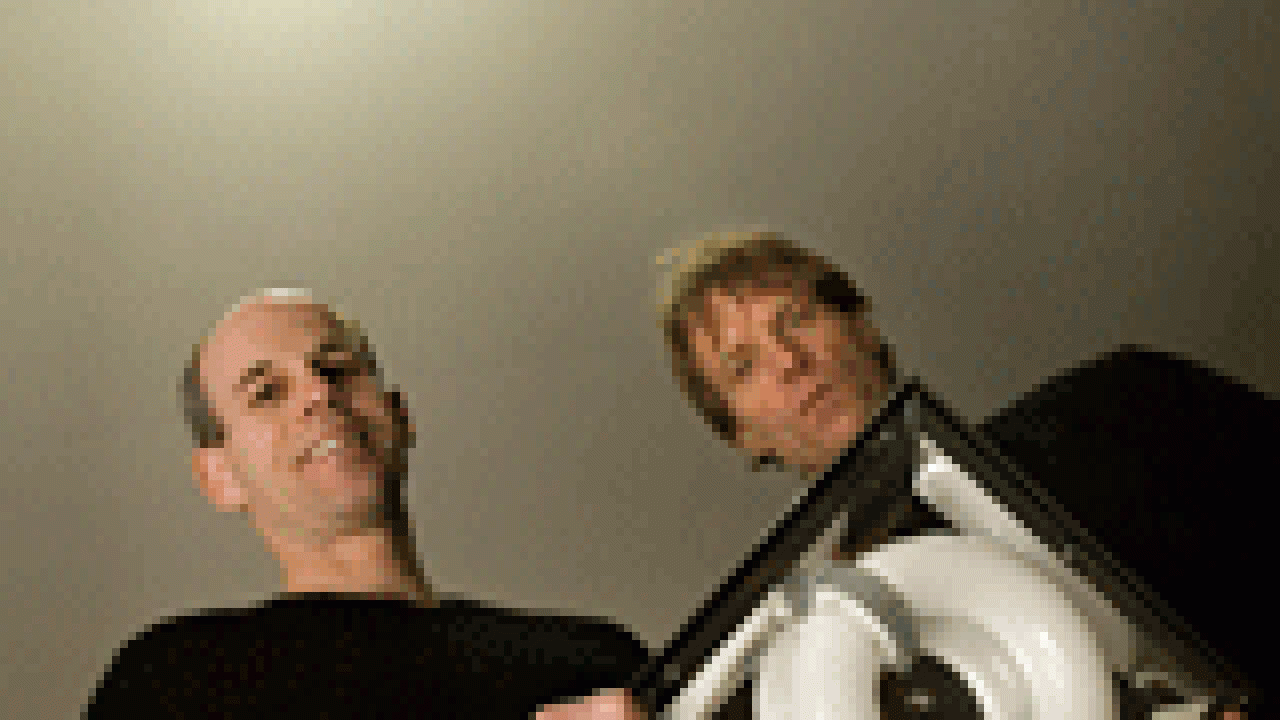UC Davis lights up the night. Just ask anyone who drives by on Interstate 80, say, at 2 a.m.
All those lights and so few cars in and around the south entry garage after the Mondavi Center for the Performing Arts has closed down for the night, and in the wee hours of the morning.
Same goes for the north and west entry garages, and dozens of parking lots all across campus. Ditto for all the roads with few cars and the paths with few pedestrians.
Michael Siminovitch, director of the university's California Lighting Technology Center and a professor in the Department of Design, said seeing all that wasted light "makes you jump out of your seat and say 'Stop!' "
Dim lights, bright savings
Stopping that energy waste is exactly what Siminovitch is doing, in collaboration with the campus's Utilities Division and Energy Efficiency Center, as well as manufacturers.
Demonstration projects are now in place for what is called the Smart Energy Initiative. The projects incorporate lights and motion sensors: The lights operate at 50 percent until the sensors detect cars or pedestrians. Then the lights switch to full strength.
"These things (lights and sensors) already existed on their own," said Chris Cioni, associate director of the Utilities Division. "We've simply asked manufacturers to put them together."
The campus benefits are threefold, officials said: reduced maintenance, enhanced security and less energy consumption, up to 50 percent, for a savings of up to $200,000 a year in electricity costs.
"Garages and parking lots are particularly juicy," Siminovitch said. "Juicy" in terms of energy use and the potential for savings, without sacrificing safety.
Indeed, the UC Davis Police Department is part of the collaboration. "It is always nice to partner with others especially when the outcome is a safer place for our community," Chief Annette Spicuzza said.
Cioni explained how safety is actually being enhanced: As you get into your car, the lights above operate at 100 percent. Other lights in the parking lot or garage are at 50 percent — unless someone else is moving about. As other sensors pick up that movement, more lights switch to 100 percent, alerting you to potential danger.
So why not turn the lights off all the way, until the sensors detect movement? "You want to feel safe, secure and welcomed," Siminovitch said. "Can you imagine driving down the street to a dark garage? You wouldn't go in there!"
And, rest assured, he added, "50 percent power in the middle of the night is bright."
To calculate the savings on the campus's electric bill, Siminovitch and Cioni gathered data on what the university pays for 100 percent lighting power in garages and parking lots (2,000 lights) and along roads and paths (4,100 lights). For the core campus, the bill is an estimated $400,000 annually at 7 cents per kilowatt-hour.
The most optimistic improvement is a 50 percent savings, with the lights operating at 50 percent power all the time. Of course, that is not likely — with cars and people coming and going, except overnight.
Demonstration projects in the north entry garage and the Mondavi Center administration parking lot are showing a savings of 20 percent to 30 percent, and Siminovitch and Cioni are hoping to see that range climb to 30 percent to 40 percent, based on experimentation with different kinds of fluorescent lighting and LEDs (light-emitting diodes).
The cost savings do not factor in reduced maintenance. But Cioni and Siminovitch are confident that campus crews will be changing out fewer lights and changing them out less often, because the lights will be running at 50 percent power for much of the night — thus extending their lives.
Siminovitch pointed to light-equipped bollards — illuminated posts like those in front of the Mondavi Center. The California Lighting Technology Center has developed a bollard light that could conceivably last 20 to 30 years. "The person who installs this may be retired by the time it needs to be replaced," he said.
Manufacturer-oriented
Along with lower energy use comes reduced emission of carbon dioxide from the generation of electricity, by about 4.5 million pounds a year.
"Our job at the California Lighting Technology Center is to develop and demonstrate new, more sustainable approaches to lighting," Siminovitch said. "It's very convenient having UC Davis here as our working laboratory."
He described Cioni as "a forward-thinking end user," working in partnership with the California Lighting Technology Center.
And, as UC Davis benefits, so will other UC campuses, as Cioni and Siminovitch share the Smart Energy Initiative around the system.
Manufacturers are already on board, working with Siminovitch and his team to provide lights and sensors for the demonstration projects. Eventually, the manufacturers are likely to bring the products to market for everyone to use.
As Siminovitch explained: "We want manufacturers to sell better products."
UC Davis might become one of their biggest customers by the end of the year, Cioni said. He explained that Pacific Gas and Electric Co. is offering rebate money for lighting retrofit projects, and UC Davis hopes to use such funding to install "smart" lighting throughout parking lots and garages, and along roads and paths, and on the sides of buildings.
Earlier this year, UC Davis scored a $1.25 million PG&E rebate for an energy-saving upgrade to the campus cooling system.
Media Resources
Clifton B. Parker, Dateline, (530) 752-1932, cparker@ucdavis.edu
